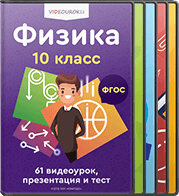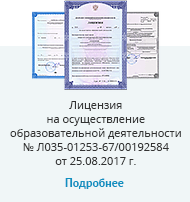Олимпиада по английскому языку. Школьный этап. 7-8 классы
READING
Task 1. Look at the sentences below about the people who have visited Antarctica. Read the text and decide if each sentence is true or false according to the text. If it is true, choose A on your Answer Sheet. If it is false, choose B on your Answer Sheet.
1. Sara Wheeler went to Antarctica to do some scientific research.
A True B False
2. Sara Wheeler was surprised by how few artists have travelled to Antarctica.
A True B False
3. Philip Hughes was one of many artists to have paintings on display at the ‘Antarctica’ exhibition.
A True B False
4. By 1975, Hughes realised that he needed to find other locations for his work.
A True B False
5. Sara Wheeler particularly liked the fact that Antarctica is so different from other places on earth.
A True B False
6. One of Hughes’s paintings brought back happy memories of Antarctica for Sara Wheeler.
A True B False
7. Hughes had to wear gloves whenever he drew a picture outdoors in Antarctica.
A True B False
8. Hughes completed the paintings ‘Christmas Day at Rothera’ outdoors.
A True B False
9. Hughes found it challenging to paint mainly in white.
A True B False
10. Hughes missed having his mobile phone in Antarctica.
A True B False
ANTARCTICA
Journalist Sara Wheeler writes about her meeting with the artist Philip Hughes and the discussion they had about their experiences in Antarctica.
Antarctica has had a powerful effect on both explorers and scientists. In 1994 I discovered why, when I spent seven months there collecting material for a travel book. I have often thought the amazing emptiness of this region would attract the interest of many landscape painters and yet, throughout history, only a small number have actually been there.
In 2003, one of them, the 67-year-old painter Philip Hughes, opened a one-man show in London called simply ‘Antarctica’. Until 1975, Hughes’s paintings were mostly of the South Downs in England, but at this point, Hughes decided he wanted to paint more distant lands. First, he travelled to South America. Then in 2001, he spent five weeks in Antarctica, dividing his time between Rothera, a British research centre on Adelaide Island, and a science camp up on the West Antarctic ice sheet.
Antarctica simply isn’t like anywhere else on this planet and for me this was the best thing about my visit. It is one-and-a-half times bigger than the United States but it is very peaceful. It also never gets dark. When I went to Hughes’s show, we looked at his paintings together. He explained, ‘I was just amazed by the beauty of Antarctica. It didn’t matter that our nearest neighbours were 800 kilometres away.’
The temperatures can be extreme. At my camp they reached -115°C and at times I felt terrible. But back in England, looking at Hughes’s painting ‘Leonie Island at Midnight’, I remembered what Antarctica was like when a storm ended. It was as if the world was new. Then I wondered why I came back. Hughes was there in summer, and the temperatures were around zero. He could draw in these conditions but if it got colder, he needed to wear gloves. The picture ‘Christmas Day at Rothera’ was drawn on paper while Hughes sat on the ice. He didn’t put paint on it until later when he went inside, a common technique with Hughes. Although there are colours in Antarctica, most of the continent is white. ‘The technical difficulty involved in painting there,’ explained Hughes, ‘was working in white. When I used even a little blue and green, I had to work very carefully.’
I asked Hughes why he went to Antarctica. ‘Today, people are controlled by things like mobile phones and email. I had to get away from this. You only become aware of the absence, say, of planes overhead, when there aren’t any. When it’s only you and the natural world, you completely understand its power.’
Task 2. Five people (11-15) all want to buy a book for children. There are descriptions of eight books below (A-H). Decide which book would be the most suitable for these people to buy. You won’t need some of the books. For questions 11-15, write the correct letter (A-H) on your answer sheet.
11. Gina wants a book for her nephew who is interested in nature. He’s always asking questions about the world around him and Gina thinks he’s ready to start learning a few simple facts.
12. Bruno is looking for the book his daughter will enjoy reading and which will also help with a project she is doing at school. She has to describe an important event from the past.
13. Edita’s son loves animals and she would like to buy him a book with beautiful pictures and a strong message about the need to respect the environment.
14. Tony wants to buy a novel for his teenage sister. She likes stories that are true to life and that show people in difficult situations.
15. Lydia is looking for a book about animals for her granddaughter, who cannot read yet. She wants a book with several stories in it, and some attractive pictures.
BOOKS FOR CHILDREN
A I Wonder Why
The wonders of science come alive for children in this delightful book. As well as enjoying the lovely pictures, they will also learn about how plants grow, see how different birds care for their young and discover some interesting information about insects.
B Basic Technology
A love of knowledge begins early with this colourful reference book. Find out interesting facts and learn about important inventions in the last century. If you know a child who asks questions like ‘What make a car go?’, then this is the book for you.
C Painting History
This is a beautiful book showing famous paintings through history. Each painting is described in detail, including simple facts about the people shown in them and their lives. Children are invited to look more closely at the pictures and to try some of techniques themselves.
D The Hunter
In this exciting story, wonderfully illustrated by a famous wildlife artist, Jamina finds a baby elephant whose mother was killed by hunters. Looking for help, she travels back through the African bush and is able to enjoy the nature all around her. Her journey teaches her the importance of doing all we can to save and protect our world.
E Forest tales
This book is a collection of seven well-known animal stories from different cultures around the world. They are particularly suitable for reading aloud and would make good bedtime stories. Each story is about six pages long with bright and colourful pictures on every page.
F Journey to the Past
Lying ill in bed, Lucien knows he is not like other boys. In this imaginative story he finds out just how different he is. He discovers that he has the power to transport his mind through space and time. This amazing novel will appeal to those who read to escape from the real world.
G Time Travellers
This very interesting set of stories shows what life was really like for people at certain points in history – the building of the Eiffel Tower, the sinking of the Titanic, the first moon landing. Written as diaries, these stories are historically accurate.
H Joanna’s Search
Joanna was brought up by her aunt and uncle and has never known her parents. At 14, she decides to try and find the answers to the questions that she has always asked herself – ‘Who am I?’, ‘Where do I come from?’ The novel tells the moving yet funny story of Joanna’s search for her identity.
USE OF ENGLISH
Task 1. Read the text below and choose the correct word for each gap. For questions 1-10 mark the correct letter A, B, C or D on your Answer Sheet.
INVENTIONS
Great inventions are ideas that can sometimes change the world. The invention of the radio has brought (1) ___ places closer together, and the car has made it possible to (2) ___ a long way. An invention might also be a better way of doing something – for example, a tool (3) ___ make a job easier, or a new farming method. Many inventions, like musical instruments or sports equipment, have made life more comfortable and enjoyable. The range of inventions is enormous.
Not (4)___ good idea leads to immediate (5) ___ , however. (6)___ the 15th century, Leonardo da Vinci wrote down his idea for chains (7) ___ were able to drive machines – but the technology to (8) ___ these chains did not (9) ___ then. This shows that a great invention may be unworkable (10) ___ a future development makes it possible.
1. A far B absent C other D distant
2. A reach B travel C transport D arrive
3. A for B with C to D of
4. A every B any C all D each
5. A prize B success C winner D victory
6. A Between B At C During D Since
7. A what B who C which D where
8. A produce B promote C record D put
9. A last B exist C happen D continue
10.A if B while C until D when
Task 2. Read the gapped sentences below (11-15) and choose the correct word A, B or C for each gap. Mark the correct letters on your Answer Sheet.
11. When I go to a theatre, I like ____ smart clothes.
A wear B wearing C am wearing
12. In my country, young people wear ___ jeans.
A a tight B tights C tight
13. My best friend can paint colourful pictures.
A colourful B colour C coloured
14. I first ___ my best friend when I started primary school.
A was meeting B have met C met
15. My new school ___ three years ago.
A built B was built C has been built
WRITING
Imagine that you are going to watch a good movie in the cinema soon. Write an e-mail letter to your friend and ask her/him to join you. Do not write down the address.
Do not forget to write about:
the date and the name of the cinema you are going to visit
why you want to go there and why you have chosen this movie
the programme of your visit
You should write about 100-120 words.















